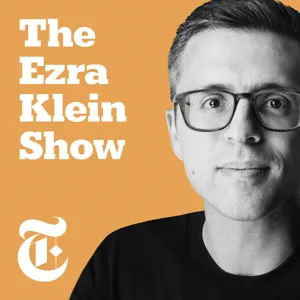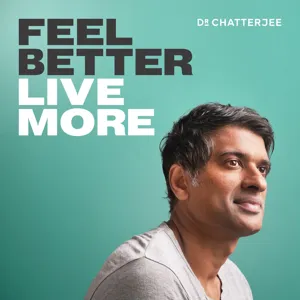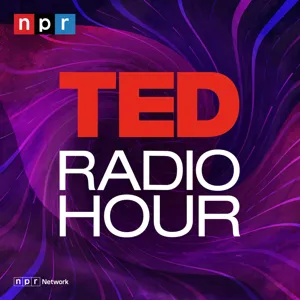Podcast Summary
The Crisis of Loneliness: The Importance of Hanging Out: Decreased free time and spread of isolating spaces lead to loneliness and loss of simple social skills. Prioritize community and make hanging out easy to combat negative effects on mental and physical health.
Modern life is becoming increasingly isolating, leading to a crisis of loneliness and the loss of the simple skill of "hanging out" with others. Hanging out is defined as spending time with others without putting too many expectations on the interaction. The factors contributing to this isolation include decreased amounts of free time and the spread of spaces that make it harder for people to be in proximity to each other. The consequences of this isolation are significant, including the loss of the capacity to simply be around others and the negative impact on mental and physical health. To address this issue, we need to consider how we can structure our society to prioritize community and make hanging out easy and the default, rather than a complicated dance of schedules and calendars.
The importance of consistent social interactions and improvisation in open spaces: Regular social interactions and improvisation are necessary for preventing social atrophy and building strong connections. Our modern era's emphasis on individualism and private property makes it challenging to create open spaces for spontaneous interactions.
Hanging out and building social connections require consistent exposure and improvisation in shared, open spaces. The book emphasizes the importance of repeated social interactions, much like exercising muscles, to prevent atrophy. The speaker reflects on the difference between their social experiences in the past, where they lived in shared spaces and had more spontaneous interactions, and their current experiences, which are often constrained by tight schedules and narrowly defined activities. Improvisation and spontaneity are crucial elements of hanging out, and they require both time and space to flourish. The speaker also touches on the structural dimension of this issue, noting that our modern era prioritizes individualism and private property, making it more challenging to build and maintain strong social connections. This could lead to a profound social mistake, as we may be missing out on the benefits of living in closer-knit communities.
Desire for personal autonomy and control in living arrangements: Higher education and income individuals may prioritize isolation for personal reasons, but it can lead to unintended consequences like losing touch with community and family.
The desire for isolation and control in living arrangements can stem from a desire for personal autonomy and prioritization of certain social priorities. However, this trend towards isolation, particularly among those with higher education and income, can have class dimensions and unintended consequences, such as losing touch with community and family. The itinerant nature of academic life can also contribute to this trend, as individuals may be forced to move frequently to pursue educational and career goals, leading to greater physical distance from loved ones. This discussion highlights the complex relationship between social arrangements, personal priorities, and the broader societal context.
Exploring new places and building connections in your twenties: Prioritize thicker relationships and broaden your perspective on family to counteract feelings of isolation and loneliness as responsibilities and commitments increase in your thirties and beyond.
The twenties are an optimal time for exploring new places and building social connections due to fewer responsibilities and greater mobility. However, as people enter their thirties and beyond, with the addition of family and career commitments, the ability to maintain these connections becomes more challenging. It's essential to adapt and prioritize thicker relationships to counteract feelings of isolation and loneliness. Additionally, the concept of family is evolving, and it's essential to broaden our perspective beyond the traditional nuclear family unit to include extended family and community connections. These relationships can provide crucial support during different life stages.
The importance of families for deep connections: Families, whether chosen or by blood, offer a unique kind of social connection that allows for second chances and longevity, but creating environments for them requires a significant investment of time and space.
Families, whether chosen or by blood, offer a unique kind of social connection that goes beyond the tyranny of constant choice. They provide a sense of cyclicality and longevity, allowing for second and even third chances. This idea of giving relationships a chance to evolve, even when they're not perfect, is essential for building deep connections. However, creating such environments requires a significant investment of time and space. Unlike our modern society, which prioritizes individual autonomy and consumer choice, living arrangements that facilitate constant hanging out are less common. This spatial question is worth reflecting on, as the lack of options to experiment with communal living may hinder our ability to build strong, long-lasting relationships.
Exploring Alternative Living Arrangements: Our cultural focus on individual homeownership and personal space might lead to feelings of isolation. Alternative living arrangements like cohousing could foster stronger community connections and happiness.
Our cultural obsession with individual homeownership and personal space may be contributing to feelings of isolation and unhappiness. The speaker shares personal experiences of exploring communal living arrangements, such as cohousing, and the societal stigma surrounding such alternatives. They also reflect on the pressure to view college years as the best of one's life due to the abundance of free time and community, but the discomfort of constant proximity to others. The speaker suggests that our cultural norms may be hindering us from exploring alternative living arrangements that could foster stronger community connections and happiness, despite the initial discomfort or unfamiliarity.
Cultural emphasis on privacy and individualism contributing to loneliness: Our cultural focus on the nuclear family model, prioritizing privacy and individualism, may be unsustainable and contributes to the epidemic of loneliness. Reevaluating social norms and prioritizing communal connections is necessary.
Our cultural emphasis on privacy and individualism, as seen in the nuclear family model, may be contributing to the epidemic of loneliness. This way of living, which was not the norm for most of human history, has become mentally and culturally ingrained despite being unsustainable for many. The discomfort experienced by students adjusting to communal living is a reflection of this cultural clash. David Brooks' essay "The Nuclear Family Was a Mistake" highlights the limited timeframe of the nuclear family's success and the need to reconsider our expectations for social existence. Sophie Lewis' book "Full Surrogacy Now" further explores the unrealistic compulsions and expectations within the nuclear family unit. Overall, it's crucial to reevaluate our social norms and prioritize communal connections to address the issue of loneliness.
Counteracting pressures in families during isolation: Embrace open family structures and social connections to combat unrealistic expectations, stress, and anxiety during isolation. However, not everyone has the resources to do so, and young adults may face unique challenges in this regard.
The traditional nuclear family structure, which emphasizes a closed and claustrophobic unit, can lead to unrealistic expectations, stress, and anxiety. This is particularly challenging during times of isolation, such as the COVID-19 pandemic. To counteract these pressures, the author suggests embracing more porous and open family structures, including engaging in social interactions with people outside the immediate family. However, not everyone has the resources to do so, and the middle class, in particular, may struggle to meet these expectations without financial support. Interestingly, a recent study found that young adults aged 18 to 24 report feeling twice as lonely as seniors, highlighting the importance of addressing social connections across all age groups.
Loneliness Among Young Adults: A Surprising Trend: Despite being stereotyped as the most social demographic, young adults face higher levels of loneliness than the elderly, driven by factors like increased social comparison and fear of public exposure, as well as the shift in social behavior brought about by social media.
Young adults, who are often stereotyped as the most social demographic, are experiencing higher levels of loneliness than the elderly, both during and before the pandemic. This is due to a combination of factors, including increased social comparison through digital interfaces and a fear of public exposure when interacting in person. The rise of social media was initially expected to make socializing easier and more accessible, but instead, it has led to more time spent online and a shift in social behavior. While substitution plays a role, the issue is not solely about online relationships replacing in-person ones. Instead, the ways we interact online, such as the ability to curate our social circles, can contribute to this loneliness epidemic among young adults.
The importance of resolving conflicts in real life: Real-life conflicts can lead to healing and new spaces for interaction, while online contempt can shut down interactions entirely. Compassion is crucial for effective conflict resolution in both virtual and real-life relationships.
While the Internet provides us with the convenience of avoiding interactions with people who make us uncomfortable or hold different opinions, real-life encounters require us to engage and find resolution. The dominant negative emotion online is contempt, which can lead to shutting down interactions entirely. In contrast, real-life conflicts often result in healing or new spaces for interaction. Compassion, an emotion that requires exercise and training, can help bridge the divide between anger and contempt in both virtual and real-life relationships. The ease of avoiding conflict online may impact our ability to handle conflict effectively in real life.
Impact of Wireless Headphones on Casual Conversations: Widespread use of wireless headphones reduces opportunities for spontaneous conversations, potentially limiting new friendships and community building.
The widespread use of wireless headphones in our daily lives has significantly impacted our ability to engage in casual conversations with strangers and even with those close to us. The speaker recalls a time before headphones were common when such interactions were more frequent and easier. Now, approaching someone with headphones in can feel like an intrusion or a risk, leading to fewer opportunities for spontaneous connections. The speaker also notes that headphones have become particularly prevalent in social spaces like coffee shops, parks, and even at the gym, making it harder to strike up a conversation. This reduction in casual conversation may come with a high cost, as it can limit opportunities for forming new friendships and building community. The speaker suggests that the rise of headphones reflects our modern world's increasing noise levels and our desire for control over our auditory environment, but it also highlights the importance of being open to the unexpected interactions that can enrich our lives.
The importance of awkwardness and risks in personal growth: Avoiding awkwardness and risks through limiting activities could negatively impact teen mental health and self-development. Embrace them for valuable experiences and personal growth.
While attempts to shield children from socially awkward situations or potential dangers through limiting activities like sleepovers may seem well-intentioned, they could unintendedly contribute to poor teen mental health and self-harm. Awkwardness and risks are inevitable parts of life, and they play a crucial role in personal growth and relationship building. The speaker shares personal experiences of formative moments from childhood sleepovers and how they contributed to his development as an individual. The author's book also explores various stories involving risk, fear, and uncertainty, highlighting the downside of a more openly social and spontaneous life. Embracing the awkwardness and risks, rather than trying to avoid them, can lead to valuable experiences and personal growth.
The Importance of Social Relationships in the Workplace Amidst Social Disruptions: Maintaining social relationships in the workplace is crucial for enhancing work quality and overall well-being, despite the challenges of social disruptions like remote work and shifting schedules.
While we may fear social risks and the potential harm they bring, many of these risks are minimal and can be overcome with persistence. Workplaces are a significant site of socializing, and the disruption of in-person interactions during the pandemic has led to a sense of loneliness and a lack of deep relationships. However, these relationships are crucial for enhancing the quality of work and overall well-being. The ongoing debate over remote versus in-person work has resulted in shifting hours and schedules, making it challenging to maintain these connections. Despite these challenges, the importance of building and maintaining social relationships in the workplace remains essential.
The cost of isolation in remote work: Remote work offers flexibility but can lead to feelings of isolation, impacting social connections and overall well-being. Prioritizing convenience may limit deeper experiences and connections.
While the flexibility of remote work and having control over one's physical workspace can be beneficial, it can also lead to feelings of isolation and lack of social connection. This inconsistency in work relationships can make it difficult to build and maintain friendships and networks, which can have significant social costs. These relationships often begin in a professional setting but can expand beyond it, leading to a more enriching and connected life. However, as we continue to prioritize convenience and eliminating annoyances, we risk missing out on the deeper experiences and connections that come with the friction of everyday life. Ultimately, it's essential to consider the long-term consequences of our choices and the impact they have on our social connections and overall well-being.
The Power of Long-Term Correspondence: Investing time and energy into long-term relationships, even during long separations, can keep friendships alive and eventually lead to reunions.
People often prioritize short-term comfort or instant gratification over long-term relationships and meaningful connections. This trade-off is particularly evident in contemporary society with its constant distractions and stimuli. Tove Jansson's letters during World War 2 serve as a poignant reminder of the power of long-term correspondence and the importance of maintaining relationships despite the uncertainty and long separations. Despite not always receiving replies, Jansson wrote intimate letters to her friend Eva Konikova, imagining her presence as they walked through the streets of Helsinki. Their correspondence served as a form of diary entries, allowing them to keep their friendship alive during their long separation. Ultimately, their dedication to the relationship paid off as they were eventually reunited after years of letter writing. The story of Jansson and Konikova highlights the value of investing time and energy into long-term relationships, even when faced with uncertainty and long separations.
Intimate communication with self or others leads to deep connections: Writing letters, voice notes, or long phone conversations allow for deep, sustained engagement and a sense of shared processing, leading to meaningful connections.
The act of communicating intimately with another person, even when alone, can lead to deep and meaningful connections. Whether through writing letters, voice notes, or long telephone conversations, these channels allow us to process our thoughts and experiences with the intention of sharing them with someone else. The act of recording our thoughts for a specific audience, real or imagined, can provide a sense of focus and purpose. The example of Tove Jansson's letters illustrates this, as she wrote to process her personal experiences and the events of the war, with the hope that her letters would be read and understood by someone else. The telephone, as mentioned, was a popular medium for this kind of intimate communication in the past, but it's becoming increasingly difficult to achieve the same level of intimacy through shorter, more frequent digital interactions. Ultimately, the structures and mediums that allow for productive and intimate communication between individuals, even when alone, are those that encourage deep, sustained engagement and a sense of shared processing.
Exploring the Intimacy of Phone Conversations vs. Digital Tools: Phone conversations offer a deeper sense of intimacy compared to digital tools due to the open-ended nature of voice communication. Books like 'Black Paper' and 'On the Inconvenience of Other People' can provide insights into the complexities of human connection.
While digital communication tools like Zoom and podcasts have their benefits, they can also lead to a sense of fatigue and a lack of true intimacy compared to in-person interactions. The speaker shares their experience of feeling more connected during phone conversations due to the intimacy contained in voice and the open-ended nature of the calls. They also discuss how the visual elements and digital infrastructure of platforms like Zoom can add pressure and structure to interactions, affecting their depth. The speaker recommends three books: "Black Paper" by Teju Cole, which explores ethical sensibilities, and "On the Inconvenience of Other People" by Lauren Berlant, which philosophically unpacks the idea that other people can be inconvenient. These books offer insights into the complexities of human connection and the importance of examining our relationships with others.
Inconvenience as a Political Experience: Inconvenience can make us aware of our political expectations, rights, and freedoms. Berlant's argument and Finn's novel offer unique perspectives on this theme.
Inconvenience can be a political experience, as argued by Lauren Berlant. It can make us aware of our political expectations, rights, privileges, and freedoms. On a lighter note, Melanie Finn's novel "The Hair" offers a feminist gothic thriller that is not only fun and dark but also a great read for those interested in the genre. This book invites us to explore political themes through a thrilling narrative. The episode was produced by Andy Galvin, Jeff Geld, Roshik Herma, and Kristen Lynn, with fact checking by Michelle Harris, Mary Marge Locker, and Kate Sinclair, mixing by Jeff Gelb, original music by Isaac Jones, audience strategy by Shannon Busta, and executive produced by Annie Rose Strasser. Special thanks to Sonia Herrero and Christina Similewski.





